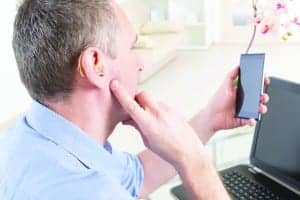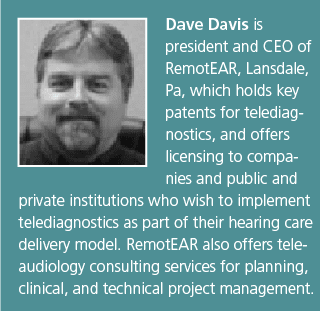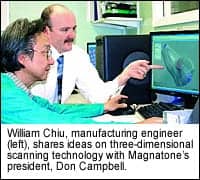Tech Topic | January 2017 Hearing Review
Teleaudiology can be a game changer for hearing care practices and organizations. Here are three questions to ask when considering it as a means of improving professional presence and productivity.
I’ve been asked by people on several occasions, “How do I justify the cost of implementing a teleaudiology program?” Good question. Cost justification is the mantra of business today, and yet the notion of cost justification really boils down to a few essential follow-up questions:
- What business objective am I trying to reach or improve?
- How can applied technology help me attain my goal(s)?
- What’s my return on investment?
This article discusses each of these questions, in turn.
What business objective am I trying to reach or improve?
First and foremost, in any healthcare organization, the overarching objective is always better patient care, closely followed by productivity and/or patient satisfaction. While not mutually exclusive, these goals are uppermost in everyone’s mind when initiating change, even though we may not always tie them back to the ultimate goal. Teleaudiology can be a significant help for each of these areas, as the time and distance barriers that it overcomes equate to more timely care delivery and access to expertise that should indeed increase patient satisfaction if properly done.
In thinking about how to implement a teleaudiology program, specific metrics and analytics should be applied so that a measurable outcome is achieved. For example, it isn’t enough just to have a goal such as “reduce travel time for hearing care provider.” The actual time savings (and resulting cost/benefits) are fairly easy to calculate once the travel time reduction is quantified, and is the ultimate justification to achieve management or organizational buy-in and approval. A pro forma model with this type of analysis will go a long way to gaining approval, but should also include a range of likely outcomes—from optimistic, to likely, to not-quite-worst case. Remember, all of this is pro forma, and real world results will always be different.

Hub-and-spoke model. The first and most common-sense application is the hub-and-spoke model in which a centralized audiology department or center of excellence has to cover a number of satellite clinics over a relatively wide geographic area. This structural footprint is a no-brainer for application of teleaudiology as the cost of employing a highly skilled audiologist in each and every clinic is not feasible, and yet the time and cost to move staff members to the outlying facilities can be a colossal money drain. Windshield time aside, I have yet to see a university medical center department that wasn’t fully booked with patients, and the opportunity cost to put the audiologist behind the wheel of a car for even an hour or two is a significant factor.
Calling in the expert. Even in cases where it’s a short commute to a clinic to see patients, valuable additional help in diagnosing difficult cases is lost when no convenient tele-presence is available. While telephone and email can suffice at some level to accomplish this, it clearly doesn’t afford the remote expert to directly interface with the patient in a pseudo hands-on way to better assess the problem(s) at hand. This type of scenario would also be present in a hearing aid retail model, where a dispenser may come upon a challenging condition or fitting scenario, and would benefit from interaction with a skilled colleague who is miles, or perhaps just a few floors, away.
Efficient work flow and real-time monitoring of patient status. A more subtle but also important feature of having a teleaudiology function available is real-time monitoring of testing so that important other duties can be attended to while testing is underway. A provider can be moving throughout a facility and still at a moment’s notice check on the status of one or more patients’ testing and results. Using only the tools they already have (cell phone, tablet) a quick check of the patient’s test status and results can be easily done.
How can applied technology help me attain my goal(s)?
First, the technology has to be integrated into the office/facility/organization’s IT infrastructure. This can be easier said than done, as many large organizations have tight constraints on additions to their networks due to security and/or maintenance concerns. To have any new technology certified to work and be safe in the IT infrastructure can sometimes take months or years to achieve.
Not too long ago I was discussing a project involving a university medical center and the Bureau of Prisons. While there was a clear and significant economic benefit to seeing the prisoners remotely rather than transport them, and the disruption that can result in the practice, the task of introducing a new technology into the Bureau of Prisons infrastructure was so daunting that the project couldn’t move forward.
The technology required to create a teleaudiology capability isn’t rocket science; in fact it is probably so simple and commonplace that you’re using it already. Web conferencing technology combines audio and videoconferencing over any IP network with the ability to remotely control a desktop or mobile device to which a diagnostic instrument is connected. With eyes and ears on the patient during the patient encounter, and a well-trained and competent assistant alongside them, you can perform a very good emulation of a face-to-face encounter.
Software-as-a-Service technology offered by RemotEar, called Deviceware®, is an excellent tool to facilitate the entire process. While configuration and deployment of various types of stations requires careful planning, testing and documenting, the Deviceware service is able to scale from mobile/handheld devices to large cart system implementations. The configuration and deployment of this is based on a needs assessment of the facility infrastructure and needs of the hearing care provider, as well as the logistics of the department or practice.
Deviceware contains its own built-in audio and videoconferencing and even accommodates high-definition video. However, if true tele-presence is required, it can also integrate comfortably with higher-end conferencing solutions such as Polycom, Cisco, and others. In this case, Deviceware handles just the remote operation of the diagnostic software at the patient location, leaving the videoconferencing to handle the face-to-face interaction between the remote provider and the patient as well as the assistant. Most of this is accomplished by switching audio sources from the provider directly to the patient or alternately to the assistant.
If it sounds easy, it can be, but with audiometry the scenario is fairly complex in order to handle speech testing and in-booth patient communications in particular.
What’s my return on investment?
If you’ve carefully considered and worked through the previous two questions, then you probably will have most of the information needed to perform this type of calculation and analysis. For example, freeing up an audiologist from an hour drive to a clinic to test several patients should result in at least a 2-hour (including the return trip) opportunity time trade-off to see several additional patients—depending on the level and type of testing to be done. Multiply this by the monthly travel time to visit the various outposts covered, and you can be talking about significant money savings in just a month’s time.
A roll-up calculation of the number of these types of events and costs, stratified across a range of likelihood scenarios, should provide a meaningful measure of how much money can be saved directly. In the other models discussed, it may be a little harder to quantify given that the quality of care provided by having a colleague with direct expertise available at a moment’s notice doesn’t translate easily into dollar cost savings. But it does have a relationship to patient satisfaction and those providers, and organizations that solicit and track patient satisfaction could probably equate this to patient retention and infer the monetary value to the organization (ie, a softer calculation but a meaningful contribution to a hearing care delivery business model).
Finally, competitive threats in areas where patients have a choice of provider network is a more subtle but real factor in determining the justification for investing in teleaudiology. If a patient has a choice of visiting a local clinic only 10-15 minutes from their home, or having to travel to a major metro area to see a hearing care provider of their competitor, it’s pretty clear who they’ll choose most of the time. Some consideration should also be given to the competitive landscape and the possibility of using teleaudiology as a differentiator for your provider network and organization.
Most hearing care organizations realize that teleaudiology can be a game changer for their business and that they need to start thinking about it—and plan for teleaudiology as a means of improving their professional presence and productivity. Considering the three questions posed in this article is a good first-step for delving into how teleaudiology can work for your practice or healthcare organization.

Original citation for this article: Davis D. The Business Case for Teleaudiology. Hearing Review. 2017;24(1):30.





